Which wild animals are dangerous in Colorado and what should you do in an animal attack? These are among the best practices for encountering and avoiding an encounter with mountain lions, black bears, rattlesnakes, coyotes, and moose.
These animals are indigenous to America’s Mountain West: Wyoming, Colorado, Montana, the Dakotas, and the surrounding area. There is some overlap. Mountain lions and rattlesnakes live all over the states, for example.
Most of the animals on this list are predatory carnivores. Some aren’t, but don’t let that fool you. Remember: the best way to safely enjoy the outdoors is to be prepared.
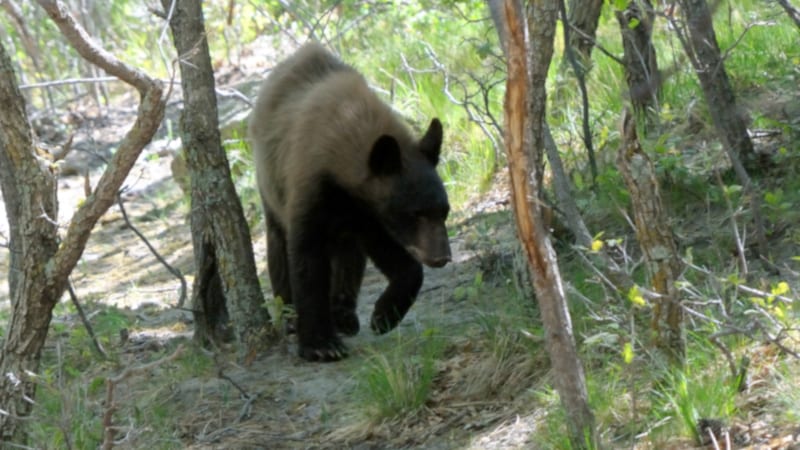
Preparation is key to safety in the wild, you don’t want to leave a bunch of food out in your campsite, and not expect a hungry bear to sniff by in the middle of the night. Here are some prevention tips:
- Be calm.
- Don’t hike alone if you have a choice.
- Always tell someone where you’re going.
- Observe your surroundings.
- Follow all camping rules and posted signs.
- Make plenty of noise when in the backcountry, so animals know you’re coming.
Here are some local Parks and Wildlife numbers to call. When in doubt and danger, call 911.
- Colorado: 303-297-1192
- Montana: 406-444-2612
- New Mexico: 505-476-8000
- Utah: 801-538-4700
- Wyoming: 307-777-4600
Let’s dive in deep and take a closer look at some particularly dangerous animals.
Mountain Lion Attacks
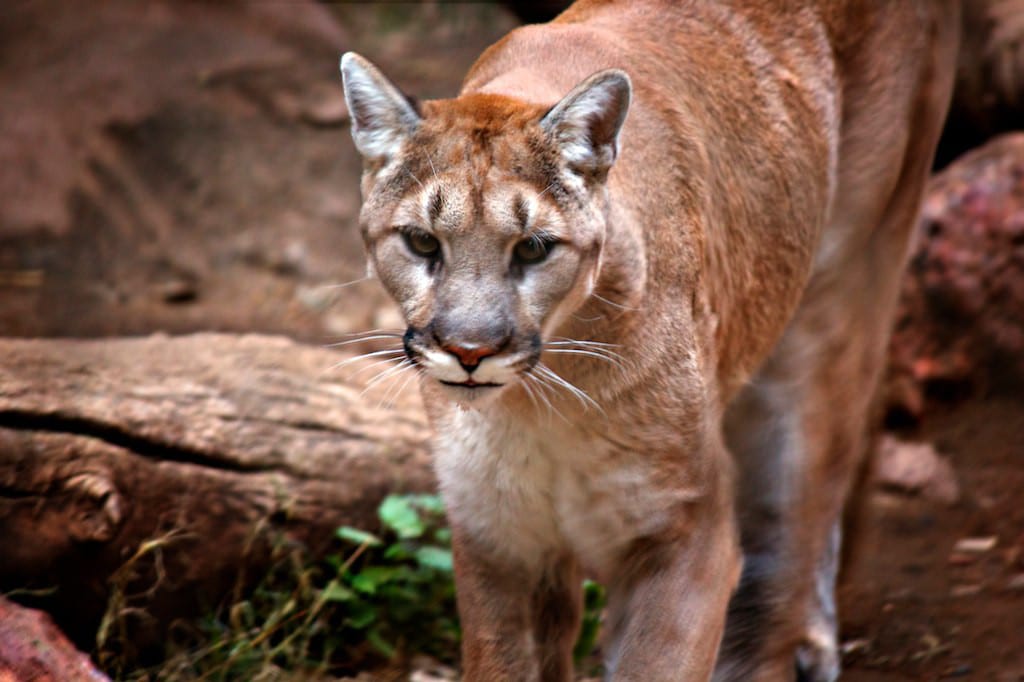
You may have heard about Travis Kauffman surviving a mountain lion attack in the Rockies. Kauffman, the Colorado resident who, on Valentine’s Day 2019, killed a lion with his bare hands while out running in the mountains. He is probably the exception to the rule when it comes to mountain lion attacks. It also was not a full-size adult mountain lion, so don’t expect to win a fight.
Some thirty thousand mountain lions are living in the States (this includes the black panther, which is a subspecies). They eat deer, squirrels, rabbits, porcupines, and other mammals. They can be found across the continent, and are just as common in South America.
Mountain lions are solitary, but there are two main exceptions—when they’re raising babies, or when they’re making babies. If you see mountain lions together, you may have stumbled onto mates.
Tips for Preventing Mountain Lion Attacks
Do you live in an area with a population of mountain lions? The following tips will help you keep mountain lions away from your home. From the California’s Wildlife Department:
- Don’t feed deer. Deer attract mountain lions
- Do your best to keep deer away. This includes fencing.
- Keep your animals and pets safe while unattended.
- Clean up any pet food or animal feed on or near your property
- Since mountain lions bury their meals, stay away from carcasses while hiking.
- Where there are lion kittens, there are probably adults too. Stay away.
- Wear a bright hunting jacket to distinguish yourself from deer or other local prey. Let them know you’re not on the menu.
- Keep your kids and pets close.
What to Do When Confronted With a Mountain Lion
Their instinct is to attack from behind. They’ll try to bite at the base of the skull, which breaks the neck of their prey. After they’re done eating, they’ll bury the carcass and come back to it later when they’re hungry again. Keep this in mind. Don’t turn your back.
Of course, you’ll do everything you can to avoid confrontation. But if an attack happens:
- Give them space to run away.
- Act stoic and brave (even if you feel scared); speak steadily and confidently toward it.
- Don’t run or make sudden movements—back up slowly (Remember that mountain lions attack from behind).
- Do things to make your body look bigger such as opening your jacket or raising your arms.
- If attacked, use weapons (sticks, stones, etc.) to fight back.
- It may retreat after a dangerous physical fight.
Black Bear Attacks
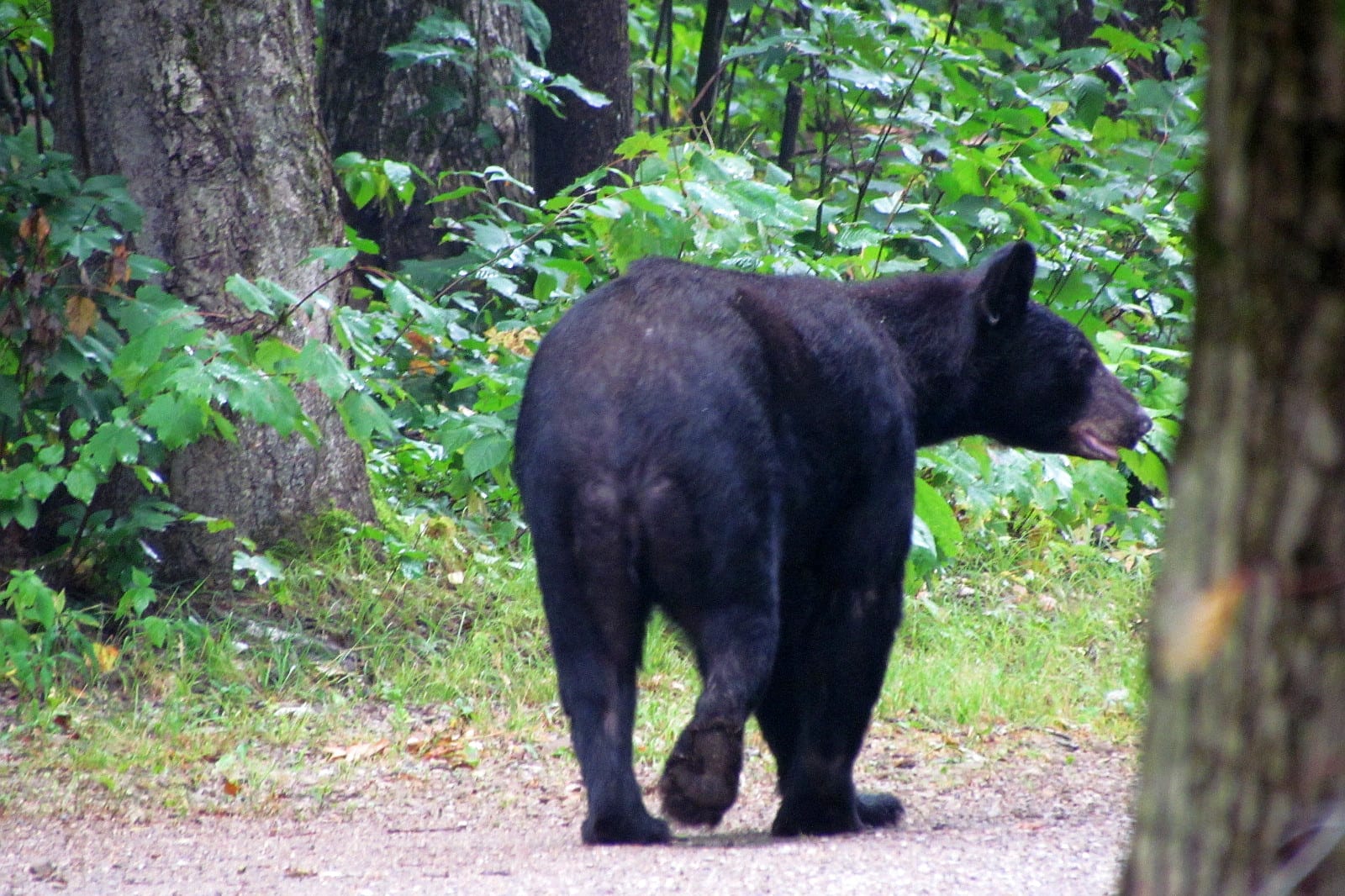
Black bears are omnivorous. Their natural diet includes fish, roots, and berries, but they’ll eat whatever they can get their paws on. They are large creatures. They tend to grow between four and seven feet long, and weigh roughly 150 to 300 pounds. Like mountain lions, they live in Canada, the US, and in Mexico.
They tend to be active when the sun rises, and for a few hours after it gets dark. They’re often mobile and active during the night hours, because they would rather elude other bears, as well as people.
Black Bears can swim too. And run faster than you might think. Their top speed is around 30 mph. They are big, dangerous, mobile creatures.
Tips for Preventing Black Bear Attacks
Be alert and a noisy hiker so they know you’re passing through. Here are some tips from the National Park Service:
- Keep away from cubs or sick bears.
- Keep one to two hundred yards away. If you want to see a bear, use binoculars.
- Did the bear change its behavior because you’re there? If so, you’re too close.
- Talk in a calm, steady voice. Many bears have encountered people before. Remember that people aren’t a part of their natural diet.
- Keep your food sealed up (and don’t leave a trail of half-eaten food).
- Stick together in groups. The vast majority of people killed by bears in the last forty years at Yellowstone were by themselves.
What to Do When Confronted By a Black Bear
So you’ve done everything you can to avoid a black bear confrontation, but it happens anyway. What do you do? These are some real tips to help you in a potentially dangerous situation.
As a rule of thumb, you don’t want to run. It’ll be hard to fight the instinct, but that will exacerbate the situation. Although the black bear’s behavior can be somewhat unpredictable, it’s important to know that its primary objective in any situation is probably self-defense. So you want to avoid menacing it.
The truth is, black bears want you to leave them alone. In general, they’re as uneasy with the encounter as you are.
When a black bear feels threatened, they may woof, yawn, salivate, or growl. They’re even known to charge and then stop at the last second. It’s an intimidation tactic. If you see these symptoms, here are some tips:
- Stay calm and be still.
- Don’t scream.
- Let it sniff you if it seems calm. It may stand on its hind legs for this.
- Pick up your kids.
- Keep your pack on your back. It can protect you.
- Move away slowly and sideways. Black bears interpret sideways movement as non-threatening.
- Don’t climb a tree.
- Don’t play dead. This works with brown bears (aka grizzlies – if attacked by grizzlies do not fight back), not with black bears.
- As a last resort, use bear pepper spray
Note on Grizzly/Brown Bear Attacks
Black bears larger, northern relative, the grizzly or brown bear, is a different beast. Grizzlies are a little braver in human confrontation. If you’re grilling out in grizzly country, don’t be surprised if they stop by for a daytime visit. It’s best not to travel or recreate alone.
They inhabit only 4 states in the Continental U.S.: Wyoming, Montana, Idaho, and Washington. As well as Alaska and Canada in North America. All the grizzlies were hunted out in Colorado years and years ago. The last known one was seen in Southwest Colorado in the 1980s, and killed in self-defense.
If attacked, do not fight back. The higher majority of those who fought back died, versus playing dead. You must let them know you are not a threat. A gun is a better option than pepper spray in grizzly country.
Rattlesnake Attacks
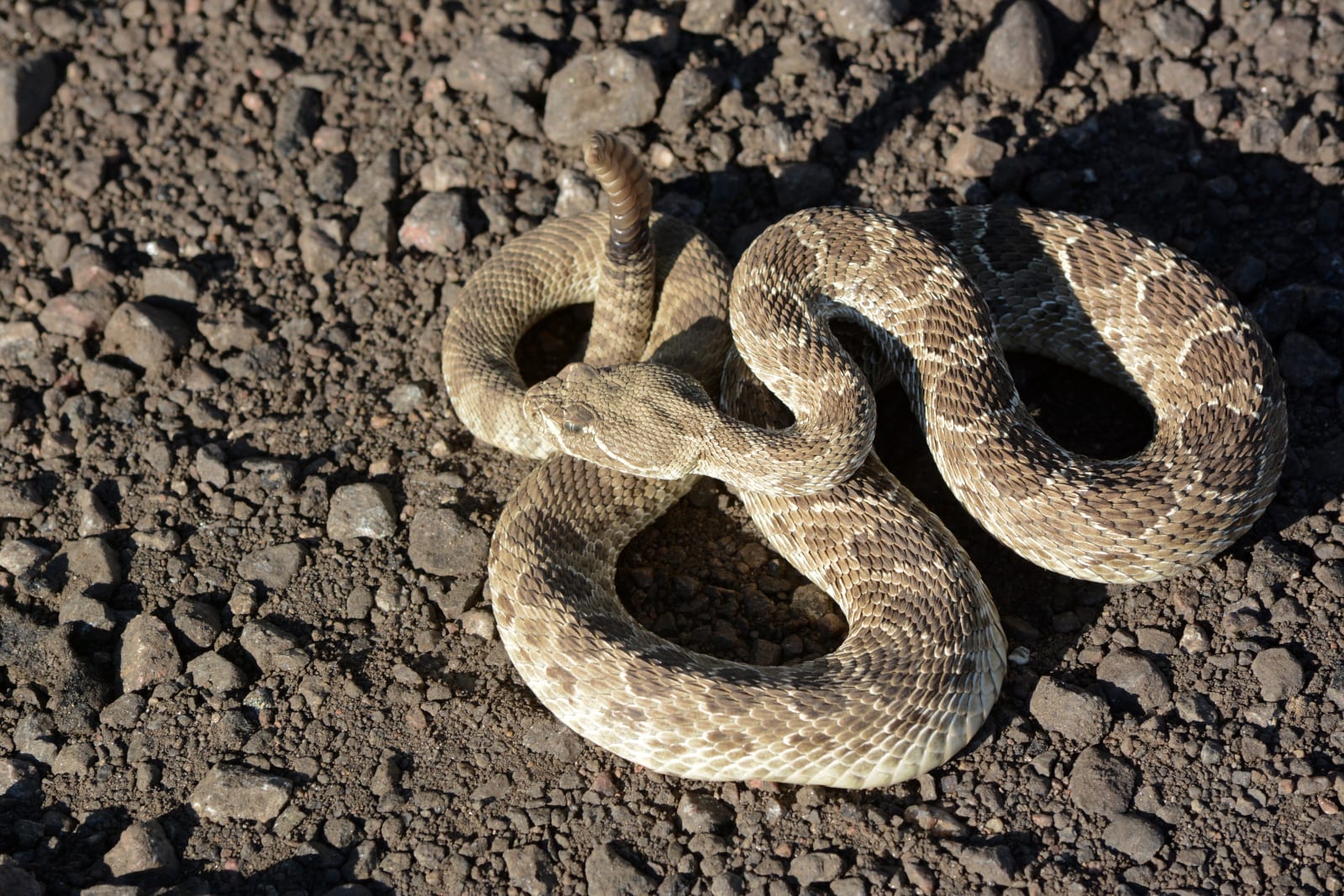
As the only type of poisonous snake in Colorado, rattlesnakes are most common in the American Southwest, though they can be found across the Continental U.S. They eat mice and small reptiles. Their natural camouflage makes them hard to spot by eye. Luckily, we can rely on another sense: hearing.
When a rattlesnake shakes the rattle on the end of its tail, it means to warn a predator away. They don’t go out looking for people. We are too big for them to eat.
Tips for Preventing a Rattlesnake Attack
Rattlesnakes don’t always rattle before attacking. The babies usually do, which is fortunate, since they’re so small and tough to spot (six to twelve inches). Baby rattlers are venomous. Here are some guidelines to rattlesnake safety:
- Stay on trails.
- Keep at least six feet away.
- Wear jeans and boots.
- Don’t aggravate it. Don’t throw rocks or sticks or try to kill it. Yes, some people try to do this. Bad idea.
- Be aware that rattlesnakes are fond of logs, leaves, and even trash.
- Don’t walk and text—stay alert (this mistake is getting more and more commonplace)
What to Do if Bitten by a Rattlesnake
A rattlesnake bite is venomous. If you are bitten, call an ambulance or get to a hospital immediately. This is a life-threatening emergency. Symptoms from bites include:
- Numbness
- Dizziness
- Nausea
- Blurry vision
- Difficulty breathing
While waiting for the ambulance:
- Keep still so the venom is slow to circulate to your heart.
- Take off tight clothing before the site starts swelling up.
- Allow the wound to bleed (venom may bleed out too).
- You don’t need to cut the wound. Just bandage it.
Coyote Attacks
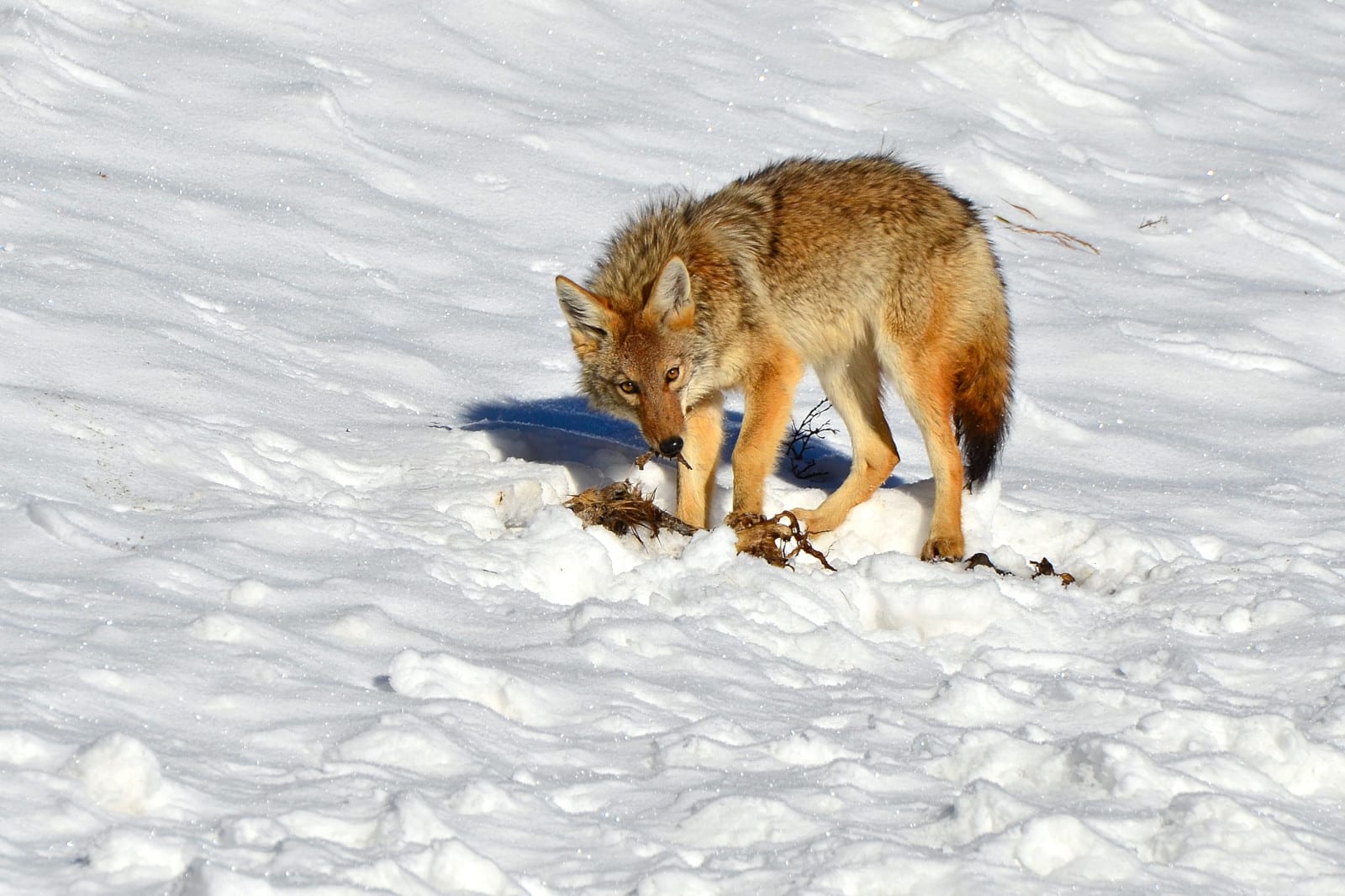
Coyotes, or canis latrans, is a species distinct from its dog and wolf cousins. They inhabit the entire continent as well as south of the border. Although coyotes prefer grasslands, forests, and mountains, they’ve been spotted in urban environments.
They tend to run away from people. If a coyote doesn’t run, it has probably gotten used to being around us and has learned not to be afraid. If such a coyote becomes aggressive, it may be retrained to fear us.
One retraining technique is using a powerful whistle. Search Amazon for a loud police whistle (affiliate link).
Tips for Avoiding Coyote Attacks
Much like the other predatory animals on this list, encounters with coyotes are rare. There are still some important guidelines to follow:
- Feeding coyotes is one main reason why they get used to people. Don’t feed coyotes.
- Keep your pets on a short leash. Coyotes attack domesticated dogs.
- Take extra precautions if there are pups (coyote babies). Parents will be aggressive.
What to Do if Confronted by a Coyote
Remain calm and keep your eyes on the coyote. Unless they become aggressive, they probably will just watch you from a distance or run away. If it approaches or growls and becomes mean, stand your ground and become more aggressive. Scare it away.
- Don’t run. The top coyote speed is 42 mph. The average running human speed is 28 mph.
- Do yell and/or throw objects. Coyotes are different than bears and mountain lions. They can be intimidated.
- Don’t antagonize it without provocation. If the coyote isn’t aggressive, just stay away.
Note on Wolf Attacks
There are no known wolves in Colorado. However, they inhabit other parts of the United States. Eastern grey wolves are smaller than their northwestern cousins. Humans are not part of the natural diet and they do not hunt them. However, they are opportunists. Keep your dogs on leash, under watch, and children always close and supervised. Do not leave food around your campsite. Make noise while traveling. If you encounter a wolf, do not run. Slowly walk away sideways with your eyes on the wolf. If they attack, intimidate them and fight back.
Moose Attacks
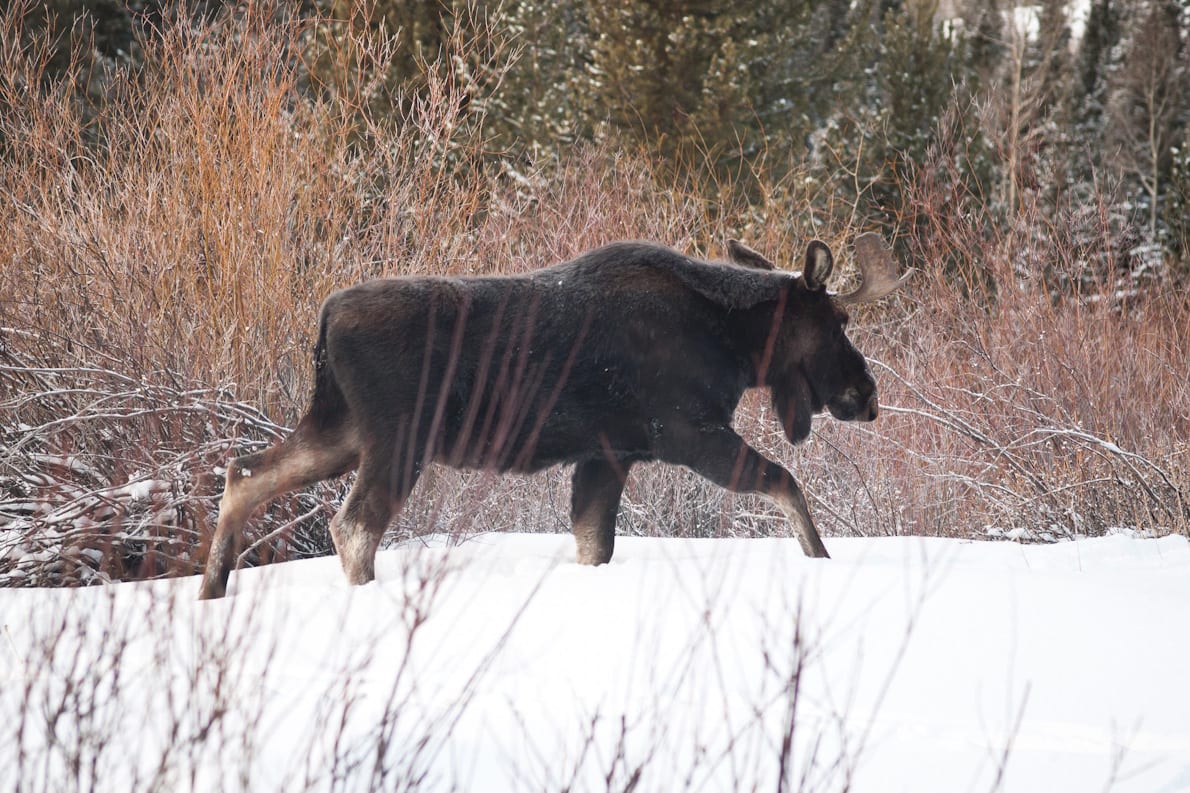
Moose are members of the deer family, which subsist on a diet of vegetation. These huge North American natives can weigh up to 1300 pounds. Their top speed is just under 35 mph.
Although moose are generally not aggressive animals, it’s important to maintain a safe distance at all times. If they feel threatened, are tired, or are hungry, they may use their fearsome size and power to their advantage. Moose attacks happen: annually, moose injure more Alaskan residents than bears do.
Tips for Preventing Moose Attack
Moose are capable of seriously injuring or even killing you if you’re unprepared. How do moose behave when they’re feeling threatened? Telltale warnings include:
- Ears flattened backwards.
- Hair sticking up on its neck.
- Licking its lips.
- A short, threatening charge. This is often just bluster, though at times they will follow through.
- If you notice these symptoms, you’ve gotten too close. Its impressive hooves can hit hard.
What to Do if Attacked By a Moose
In most cases, if you haven’t immediately surprised a moose, it won’t charge. Even if it does, chances are that it’s “bluffing.” However, real charges do happen. Here is what you can do:
- Pepper spray. Aim for the face.
- They kick out with their front hooves. Get behind something solid.
- It is OK to run. They shouldn’t chase you too far, so keep going. In this sense, Moose are distinct from the predators on this list.
- It’s dangerous if you fall. Moose are known to stomp.
- In such a case, cover your head and curl up. When it stops stomping, stay still until it goes away. If you get up too soon, it might attack again.
Whether you’re hiking, going on a run, mountain biking, or simply sharing your environment with dangerous animals, staying informed is key to survival. Remember how to stay out of danger. When in doubt, there are some basic recurring themes:
- Don’t travel alone.
- Don’t feed wild animals.
- Don’t run from predators.
- Be aware of your children and pets.
- Mind your surroundings.
- Exercise common sense.
- Pepper spray may be used in an emergency.
- Call animal control or 911 if you’re in danger.
- Pack a first aid kit too.
Hopefully, you’ve learned some things about preventing wildlife attacks in Colorado. Enjoy the Great Outdoors, and stay safe!

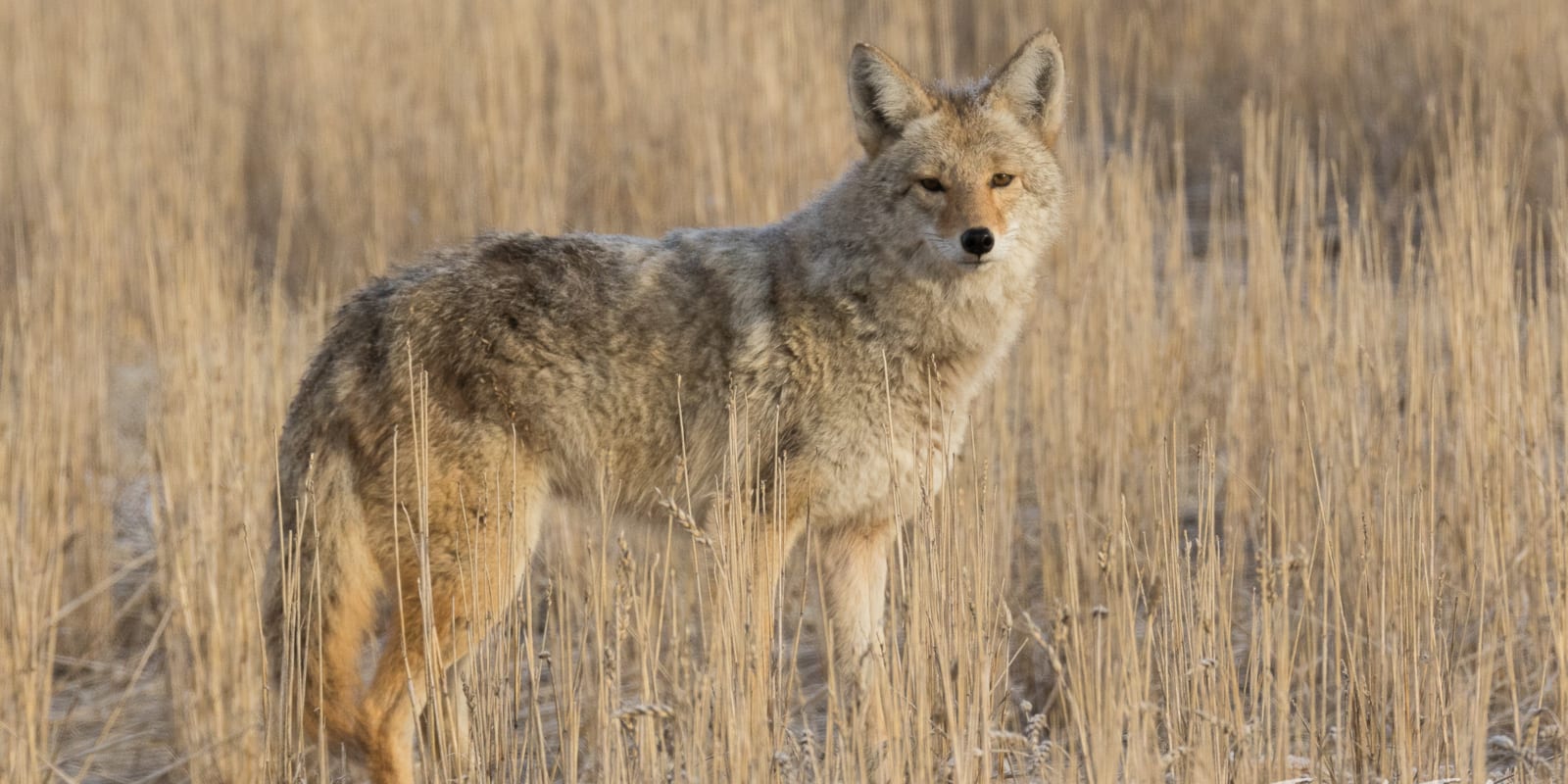
 16 Cabin Rentals near Fort Collins, Red Feather Lakes and Estes Park
16 Cabin Rentals near Fort Collins, Red Feather Lakes and Estes Park